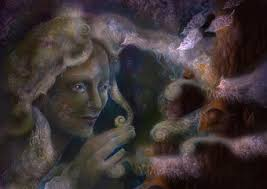For thousands of years various cultures and societies world wide have had that one individual who would separate themselves from the majority in order to best serve. These people are given a title, a name with which the rest can identify the individual as a spiritual leader, healer, or intermediary who can interact with the spirit world either through an altered state of consciousness or direct communication in order to address the needs of the community. These people are the worlds Shaman.
Regardless of the culture or linguistic group there are several key elements that are common for Shaman world wide. First the word shaman itself comes from the indigenous peoples of Siberia it is now associated with different cultures of the world including, South America, Africa, Asia, and North America. Over time these practices have woven themselves into the local customs and beliefs creating a rich tapestry of shamanic traditions. Some of these elements are:
1. The existence of the Shaman, the central figure in shamanistic practices who is considered the guide, healer, or spiritual leader with the ability to communicate with spirits, ancestors, animals, or other supernatural entities acting as a bridge between the physical and spiritual world.
2. The ability to enter an altered state of consciousness. Using various techniques the shaman alters his/her consciousness in order to travel the spirit world to receive guidance, healing, or knowledge.
3. Shamanism is generally considered a nature based practice. Believing that all beings are connected through nature. All beings posses spirit energies that can be connected with and honored as a source of wisdom and power.
4. One of the primary roles of the shaman is as a healer. To heal individuals and communities of physical, emotional, or spiritual elements by using various techniques such as herbal medicine, energy work, and soul retrieval in order to restore balance and well-being.
5. Shaman use the assistance of spirit guides and allies in the form of power animals, ancestors, or spiritual beings to assist them on their journeys and provide wisdom and protection.
6. Most shamanistic practices include ceremonies and rituals that help connect the community with the healing. Each society and culture will have it's own ceremony or ritualistic practices.
7. Shamanistic practices are deeply connected in communal and community life and shamans play a crucial role in maintaining social cohesion and resolving conflict by maintaining ancestral connection for seeking wisdom and guidance.
It is important to note that Shamanism varies greatly across different cultures, regions, and the beliefs practiced in each. While the word shamanism is originally from the indigenous people of Siberia it is now a culturally accepted term used world wide to describe these traditions and beliefs with many of the same goals and practices that bind us all together.
Peace and Balance,
John

No comments:
Post a Comment